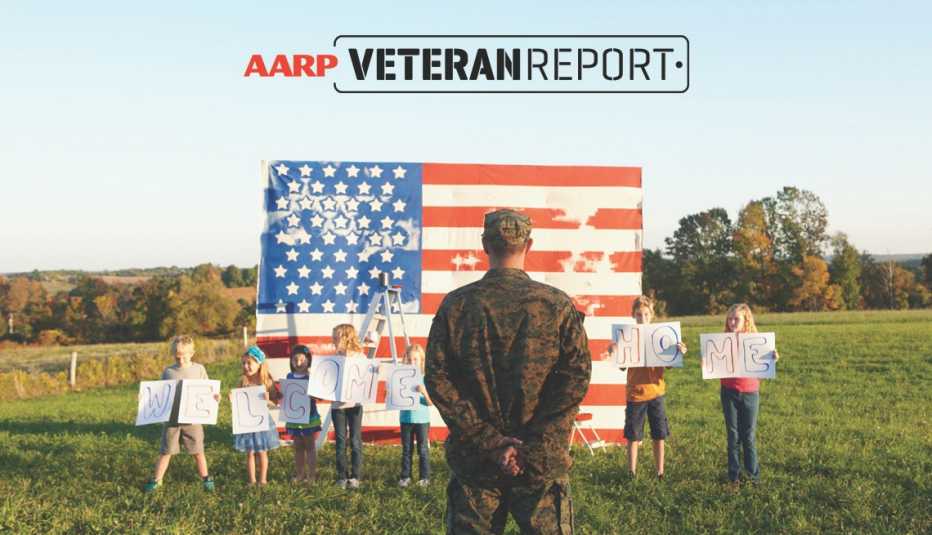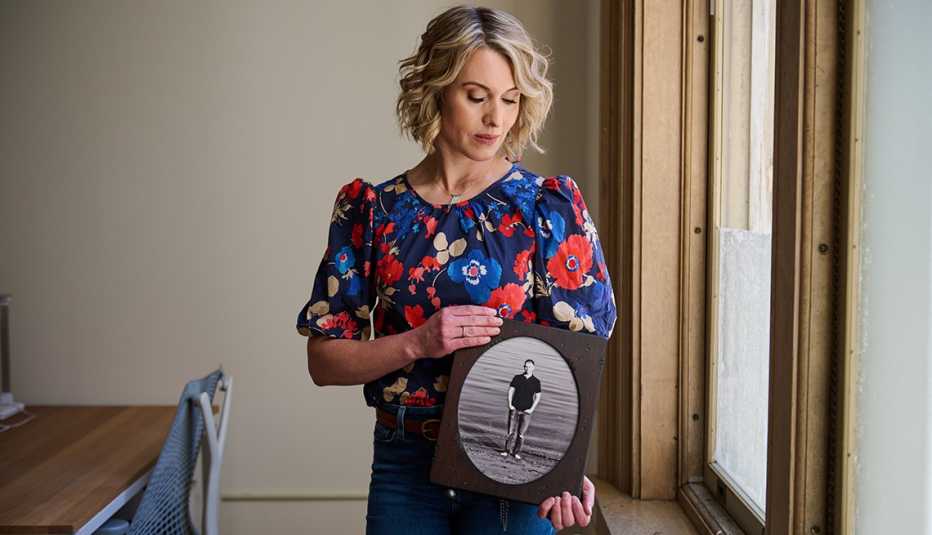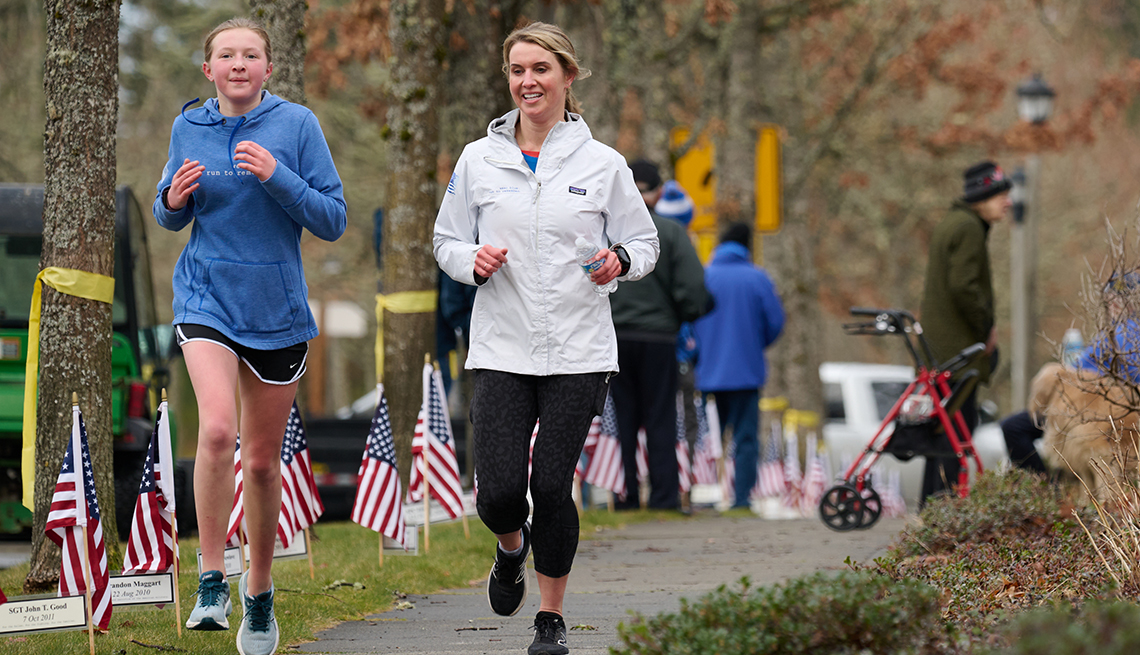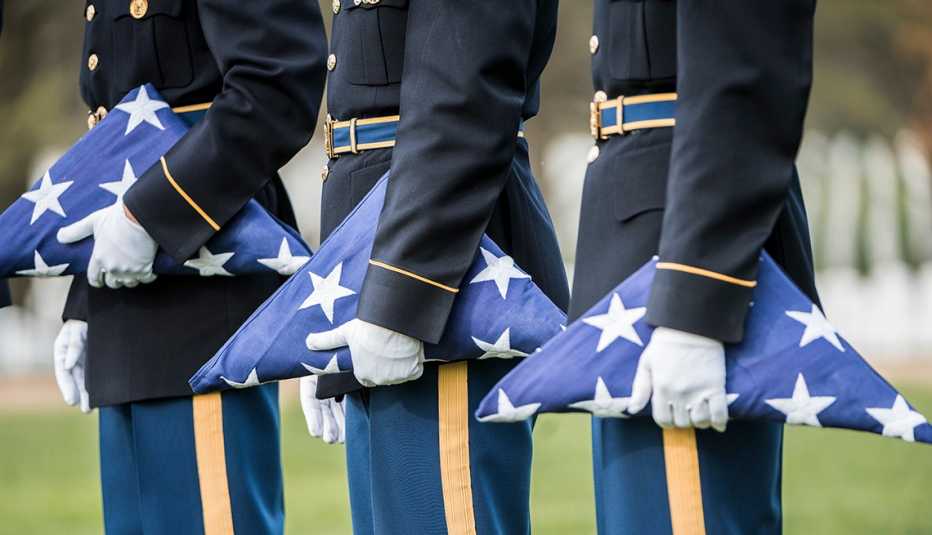Staying Fit
When Capt. John Hallett was killed in Afghanistan in 2009, he hadn’t even met his daughter, Heidi, who was just three weeks old. Lisa Hallett was cradling Heidi when she was informed that her husband would not be coming home to see them or their sons Jackson, 3, and Bryce, 2.


You can subscribe here to AARP Veteran Report, a free e-newsletter published every two weeks. If you have feedback or a story idea then please contact us here.
At first, Lisa, then 31, was consumed by the tragedy and could only utter the words, “My husband died.” It was messy. “Grief isn’t like an episode of Friends, she told AARP Veteran Report. It’s not what we see on TV. It’s snotty and coughy and droolly and snorty — it’s primal.”
But she was not alone. John, a company commander with 5th Stryker Brigade, 2nd Infantry Division, had just finished delivering medical supplies to a village with a cholera outbreak when his vehicle was hit by an IED. Three other soldiers were also killed in the blast.
“For our unit, it would become a deployment that claimed 41 lives eventually, and 15 more to the invisible wounds,” Lisa said. Everyone rallied around the bereaved, watching children, taking trash cans out, feeding families for weeks.


AARP Membership— $12 for your first year when you sign up for Automatic Renewal
Get instant access to members-only products and hundreds of discounts, a free second membership, and a subscription to AARP the Magazine.
When Jackson told her as she cried one day in the car that she was “scaring him,” Lisa realized she had to do something. After talking with other military spouses who were also struggling, she said, “Let’s start running.”
Around six months after John’s death, Lisa and a small group of military spouses at Joint Base Lewis-McChord in Washington state decided to put on their partners’ blue physical training shirts. They met in a Burger King parking lot and ran around the airfield.
The next time they gathered, they spoke the names of each fallen soldier and said a prayer before they started. There, the movement was born that would evolve into Lisa’s nonprofit, wear blue: run to remember.


Friends and runners around the country began setting up their own groups, meeting on Saturday mornings to honor the fallen. More than a dozen years later, the organization has 60 communities around the U.S. as well as Japan, Puerto Rico and Germany.
“When we say ‘Never forget,’ this is what it means. When you say, ‘Thank you for your service,’ this is how you turn your words into tangible, meaningful action,” Lisa said. “Let your presence continue to show your gratitude.”
Gold Star families can also get involved in a mentorship program that pairs children with an adult mentor who supports them through their bereavement. There’s also an initiative in which people commit to move (not just run) on Memorial Day and are sent the name and story of a fallen service member to honor.





































































